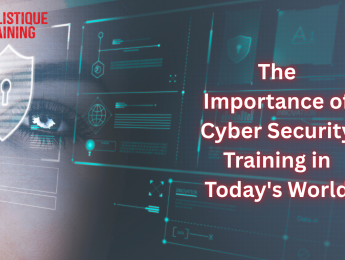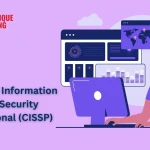- Table of Contents
- 1. Introduction
- 2. The Rising Tide of Cyber Threats: A Global Overview
- 1. Phishing
- 2. Malware
- 3. Ransomware
- 4. Insider Threats
- 3. Human Error: The Weakest Link in Cyber Defence
- 4. Cyber Security Training: What Does It Include?
- a. Password Management
- b. Phishing Awareness
- c. Data Protection and Handling
- d. Software and System Updates
- e. Network Security Practices
- 5. Types of Cybersecurity Training Programmes
- 6. Benefits of Cybersecurity Awareness for Employees and Organisations
- a. Risk Reduction
- b. Regulatory Compliance
- c. Reputation Protection
- d. Customer Confidence
- e. Internal Culture of Security
- 7. Cybersecurity Compliance and Legal Responsibilities
- 8. Training for Different Roles: One Size Doesn’t Fit All
- 9. The ROI of Cybersecurity Training: Prevention is Cheaper Than Recovery
- 10. Conclusion: Building a Security-First Culture
1. Introduction
In today’s interconnected world, the speed and scale of digital transformation have brought immense benefits to individuals and organisations alike. However, they have also paved the way for an equally rapid rise in cyber threats. From personal data theft to massive corporate breaches, the landscape of cybercrime is expanding, targeting everything from smartphones to cloud infrastructure.
The consequences of a cyberattack can be devastating. They range from financial loss and legal ramifications to reputational damage and customer trust erosion. This is not just a technical issue; it is a business-critical risk. Yet, many organisations remain ill-prepared due to a lack of awareness and training.
Cybersecurity training has become an essential component of risk management strategies. It empowers individuals with the knowledge to recognise threats and take preventative actions. In this article, we will discuss why cybersecurity training is more important than ever, examine the nature of current threats, analyse the role of human error, and explore the types and benefits of cybersecurity training across sectors.
2. The Rising Tide of Cyber Threats: A Global Overview
Cyberattacks have surged globally in both frequency and sophistication. According to IBM's 2023 Cost of a Data Breach Report, the average cost of a data breach reached $4.45 million, the highest on record.
1. Phishing
Phishing is a social engineering attack in which cybercriminals pose as legitimate entities—such as banks, HR departments, or trusted colleagues—to deceive victims into disclosing sensitive information like passwords, credit card numbers, or login credentials.
Phishing usually occurs through:
- Email: The most common method, often containing fake links that lead to look-alike websites.
- SMS (Smishing): Messages sent via text asking users to click on malicious links.
- Voice Calls (Vishing): Attackers impersonate officials or tech support to extract information over the phone.
These attacks can be highly targeted, as in spear phishing, where the attacker personalises the message using the victim’s name, position, or organisation. According to a report by Proofpoint, 84% of UK organisations experienced at least one successful phishing attack in 2022.
2. Malware
Malware, short for malicious software, refers to any software intentionally designed to cause damage to a computer, server, client, or network.
Common forms include:
- Viruses: Attach themselves to clean files and spread through systems.
- Worms: Spread without human interaction, often through network vulnerabilities.
- Trojans: Disguise themselves as legitimate software but execute harmful functions once installed.
- Spyware: Monitors user activities and sends data back to the attacker.
- Adware: Automatically delivers unwanted ads, often bundled with spyware.
Malware is often delivered through unsafe downloads, infected USB drives, or malicious email attachments. Its presence can lead to system damage, stolen data, and unauthorised access to critical infrastructure.
3. Ransomware
Ransomware is a subtype of malware that encrypts the victim’s files, systems, or devices, rendering them unusable until a ransom is paid—often in cryptocurrency.
How it works:
- It often enters through phishing emails or by exploiting software vulnerabilities.
- Once active, it locks files and displays a ransom demand, sometimes with a deadline.
- Even after paying, there’s no guarantee the attacker will restore access.
High-profile example: The Colonial Pipeline attack (2021) in the US caused major fuel supply disruptions on the East Coast. The company paid nearly $4.4 million in ransom to restore operations.
4. Insider Threats
Unlike external attacks, insider threats originate from within an organisation. These threats can be:
- Unintentional: A careless employee might click on a malicious link or mishandle sensitive data.
- Malicious: A disgruntled staff member could intentionally leak or sell confidential information.
- Negligent: Failing to follow basic cybersecurity hygiene or misconfiguring systems.
A report by Ponemon Institute found that insider threats have increased by 44% in recent years, costing organisations an average of $15.4 million per incident globally.
Notable case: Edward Snowden, a former NSA contractor, leaked classified information, raising global awareness about government surveillance and insider access risks.
Summary Table
Threat Type | Method of Attack | Impact |
Phishing | Fake emails, links, or calls to trick users | Credential theft, unauthorised access |
Malware | Infected files, downloads, or external drives | System damage, data loss, spying |
Ransomware | Encrypts data and demands payment for decryption | Business interruption, financial loss |
Insider Threats | Internal misuse of access or accidental errors | Data leaks, sabotage, regulatory non compliance |
The global economy loses over $10.5 trillion annually to cybercrime as projected by Cybersecurity Ventures by 2025.
3. Human Error: The Weakest Link in Cyber Defence
Despite technological advancements in firewalls and AI-driven threat detection, human error remains the leading cause of data breaches. Examples include:
- Weak passwords: Employees using '123456' or reusing the same password across platforms.
- Falling for phishing: In 2020, Twitter experienced a breach where hackers tricked employees into giving away access credentials.
- Improper data handling: Employees storing sensitive information in unsecured locations or sending it to personal emails.
Without proper training, employees lack the basic cyber hygiene required to protect critical systems. Cybersecurity education is the first line of defence against internal vulnerabilities.
4. Cyber Security Training: What Does It Include?
A truly effective cybersecurity training programme goes beyond simply raising awareness—it builds practical skills, instils critical thinking, and promotes a culture of digital responsibility within the workplace. These programmes are most impactful when tailored to the specific structure, risk profile, and digital infrastructure of the organisation. Below are the core components typically included in a comprehensive training plan:
a. Password Management
One of the most fundamental elements of cybersecurity training is educating employees on strong password hygiene. Weak or reused passwords remain a top vulnerability across industries. Training in this area covers how to:
- Create complex, unique passwords that combine letters, numbers, and special characters.
- Avoid predictable or common passwords like “123456” or “admin.”
- Use password managers, which securely store and generate randomised credentials.
- Enable multi-factor authentication (MFA) to add an additional security layer.
Staff are also taught the dangers of writing passwords down or sharing them across platforms, and why changing passwords regularly is essential.
b. Phishing Awareness
Phishing remains the most common attack vector, and many employees struggle to identify increasingly sophisticated phishing tactics. Training modules often include:
- Realistic phishing simulations that test employee responses in a controlled environment.
- Guidance on spotting red flags in emails—like mismatched URLs, urgent language, or attachments from unknown sources.
- Education on spear phishing, where attackers target specific individuals using personalised information.
- Strategies for safely reporting suspicious emails to IT departments.
This training empowers staff to act as the first line of defence rather than a potential entry point for attackers.
c. Data Protection and Handling
Handling sensitive data carelessly can result in severe legal and reputational consequences. Cybersecurity training teaches staff to:
- Understand the categories of sensitive data (e.g., customer information, financial records, employee details).
- Store data securely using encrypted systems and authorised platforms only.
- Avoid transferring data via unsecured channels like personal emails or USB devices.
- Recognise and comply with data protection regulations like GDPR and HIPAA.
Proper data handling is critical for both legal compliance and ethical business practices.
d. Software and System Updates
A large number of cyberattacks exploit known vulnerabilities in outdated software. Training in this area focuses on:
- The importance of keeping operating systems, browsers, and software tools up to date.
- Understanding patch management—the process of applying software updates to fix security flaws.
- Encouraging the use of automatic updates when available, particularly for critical applications.
Employees also learn that ignoring update notifications can leave the door open to ransomware and other malware infections.
e. Network Security Practices
The modern workforce often connects to company systems from multiple locations and devices, making network security awareness vital. Training in this area includes:
- Using secure Wi-Fi networks and avoiding public Wi-Fi without a VPN.
- Understanding the function and importance of virtual private networks (VPNs) in encrypting data traffic.
- Safe browsing habits, including recognising unsafe websites and avoiding downloading unverified software or extensions.
- Policies on the use of personal devices for work (BYOD—Bring Your Own Device) and mobile device management.
Employees are also encouraged to log out of sessions, avoid leaving devices unattended, and report any suspicious network activity immediately.
5. Types of Cybersecurity Training Programmes
Organisations can choose from a variety of training formats depending on their size, industry, and risk profile.
Type | Description |
Beginner Courses | Introduce employees to basic cybersecurity concepts and best practices. |
Advanced Courses | For IT professionals focusing on threat detection and response strategies. |
Simulated Attack Training | Phishing or breach simulations to evaluate response behaviour. |
Interactive e-Learning | Online, self-paced modules with quizzes and gamified learning. |
Instructor-Led Training | Real-time training with security experts for in-depth learning. |
Role-Based Training | Custom content for HR, developers, finance teams, etc. |
Blended learning approaches that combine several formats are highly effective for maintaining engagement and knowledge retention.
6. Benefits of Cybersecurity Awareness for Employees and Organisations
Investing in cybersecurity awareness training is not merely a defensive strategy—it is a proactive approach that generates tangible, long-term value for both employees and organisations. By equipping staff with the knowledge to recognise and respond to cyber threats, companies foster a more secure, resilient, and confident operational environment. Below are the key benefits of cybersecurity awareness:
a. Risk Reduction
One of the most immediate and measurable benefits of cybersecurity training is the reduction of risk. Human error remains the leading cause of cyber incidents, and awareness training directly addresses this vulnerability. Employees learn to:
- Identify and report phishing attempts before harm is done.
- Avoid unsafe digital behaviours, such as downloading attachments from unknown sources or using unsecured networks.
- Understand their role in preventing data leaks and system misuse.
By building these reflexes into daily routines, organisations significantly lower the chances of successful cyberattacks, data breaches, and costly operational disruptions.
b. Regulatory Compliance
Organisations across sectors are bound by strict data protection and cybersecurity regulations such as GDPR (EU), HIPAA (US), and ISO 27001 (international). Many of these frameworks explicitly require ongoing staff training as part of compliance measures. Awareness programmes help ensure that:
- Employees understand the legal responsibilities regarding the handling and protection of data.
- Internal practices are aligned with external legal expectations.
- Audit trails and training records demonstrate due diligence in the event of an investigation.
Non-compliance can lead to severe financial penalties, legal liabilities, and suspension of business operations. Thus, regular cybersecurity training is not just a best practice—it is a legal imperative.
c. Reputation Protection
A company’s reputation can be destroyed in seconds by a major data breach or ransomware incident. Negative press coverage, customer loss, and public backlash are common consequences. Cybersecurity training protects brand image and organisational integrity by:
- Preventing breaches before they occur.
- Ensuring employees know how to respond quickly to incidents to contain damage.
- Promoting a reputation of reliability and responsibility in the eyes of customers and partners.
In today’s digital economy, security is part of brand equity, and prevention is far easier than repair.
d. Customer Confidence
Modern consumers are increasingly aware of digital risks and are more inclined to engage with businesses that demonstrate strong cybersecurity practices. Awareness training builds customer trust by:
- Ensuring frontline employees handle data with care and respect.
- Reducing the likelihood of customer information being lost or stolen.
- Allowing organisations to publicly showcase their commitment to data protection (e.g., displaying compliance badges or certifications).
When customers feel confident that their information is safe, they are more likely to share personal data, remain loyal, and recommend the business to others.
e. Internal Culture of Security
Perhaps the most sustainable benefit of cybersecurity awareness is the development of a security-first culture within the organisation. When staff across all levels—from entry-level to executive—are trained in cybersecurity, it creates a sense of shared responsibility. This results in:
- Increased vigilance and a reduction in careless mistakes.
- More frequent reporting of suspicious behaviour.
- Cross-departmental collaboration on security practices and protocols.
Such a culture transforms cybersecurity from a siloed IT responsibility into an organisation-wide value, embedded in every workflow and decision-making process.
7. Cybersecurity Compliance and Legal Responsibilities
Companies must adhere to data protection regulations, many of which mandate cybersecurity training.
Regulation | Description |
GDPR (EU) | Requires data protection training and accountability for personal data handling. |
HIPAA (US) | Mandates training for healthcare workers on protecting patient information. |
ISO/IEC 27001 | A global standard for information security, recommending regular staff training. |
PCI-DSS | Requires businesses handling credit card information to train staff in security practices. |
Failure to comply can result in hefty fines, lawsuits, and operational shutdowns.
8. Training for Different Roles: One Size Doesn’t Fit All
Different departments face unique cyber risks and require specialised training:
- HR Teams: Must secure employee data and handle phishing attempts during recruitment.
- Software Developers: Need secure coding practices and awareness of code injection risks.
- Executives: Should understand risk governance, liability, and high-level strategy.
- Administrative Staff: Must follow email security protocols and safe document management.
Customised training ensures relevance and higher engagement.
9. The ROI of Cybersecurity Training: Prevention is Cheaper Than Recovery
Investing in training has proven to be more cost-effective than remediating a breach. According to a study by IBM, organisations with extensive training programmes save an average of $1.49 million per breach.
Examples:
- A UK-based retail chain reduced phishing click rates by 60% after implementing simulated training.
- A mid-sized healthcare provider avoided a ransomware payment of £300,000 by having trained staff detect early signs.
Cybersecurity Ventures estimates that by 2025, companies will spend over $10 billion annually on cybersecurity awareness training.
The financial argument for training is strong and measurable.
10. Conclusion: Building a Security-First Culture
Cybersecurity training is no longer optional; it is an essential pillar of organisational resilience. By educating staff across departments and roles, organisations reduce risks, ensure compliance, and build trust.
A security-first culture is built not just with firewalls and software but with informed people. Institutions must prioritise regular, role-based, and engaging training as a continuous investment.
If your organisation is ready to strengthen its cybersecurity defences, consider enrolling your teams in our comprehensive cybersecurity training programmes. Build confidence, reduce risk, and secure your digital future today.


























